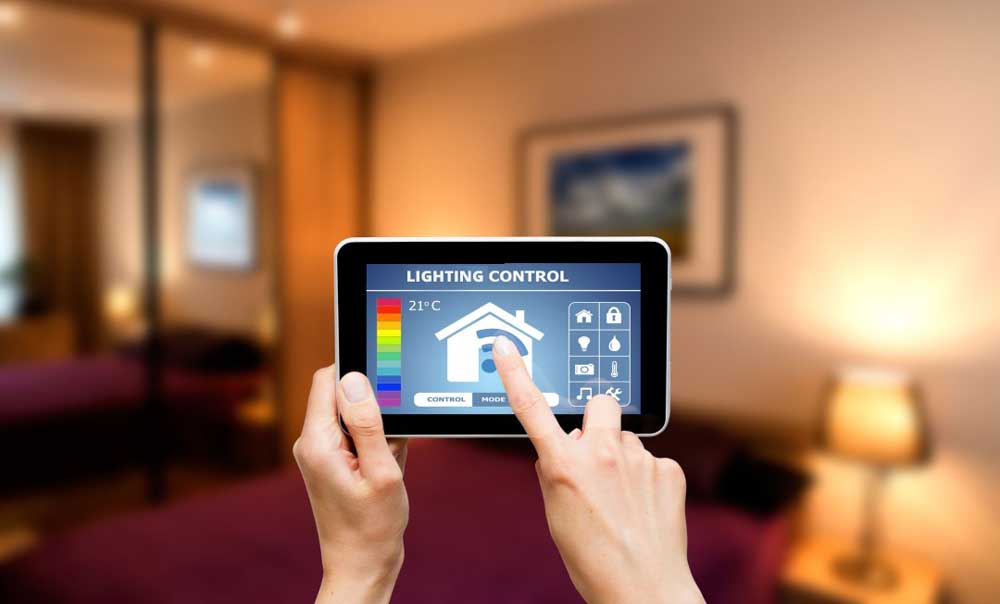
Lighting controls are systems or devices that regulate lighting in a space, allowing users to manage the intensity, color, timing, and on/off functionality of lights. These controls are widely used in homes, offices, commercial buildings, and public spaces to enhance energy efficiency, convenience, and ambiance.
Benefits of Lighting Controls:
- Energy Efficiency: Automated or sensor-based controls can reduce unnecessary lighting, helping to save energy and reduce utility bills.
- Convenience: Smart and centralized systems offer easy, remote, or hands-free control of lighting, eliminating the need for manual switching.
- Security: Timers, motion sensors, and smart systems can enhance security by ensuring lights are on when needed, even when you're not home.
- Customization and Comfort: Scene-setting, dimming, and color-changing options allow for personalized lighting that suits different activities and moods.
- Cost Savings: By reducing energy consumption, lighting controls can lower electricity costs over time.
Examples of Lighting Control Brands:
- Lutron: A leader in dimmers and smart lighting controls, offering a wide range of solutions for both residential and commercial spaces.
- Philips Hue: A popular smart lighting system that allows for color-changing and scene-setting via smartphone apps or voice control.
- Leviton: Offers a variety of lighting control products, including smart switches, dimmers, and occupancy sensors.
- Cree: Known for advanced LED lighting and smart control options.
Lighting controls, when properly integrated, can greatly improve the usability, energy efficiency, and aesthetics of a space, making them a key component in modern lighting design.
Types of Lighting Controls:
Manual Controls:
Description: These are the most basic types of controls, including traditional light switches and dimmers. They require physical interaction to turn lights on or off or to adjust the brightness.Use Case: Homes, offices, or any setting where simple control over lighting is sufficient.
Dimmers:
Description: These allow users to adjust the brightness of a light rather than simply turning it on or off. Dimming lights can reduce energy consumption and create a more comfortable atmosphere.Use Case: Living rooms, dining areas, theaters, and spaces where mood lighting is important.
Motion Sensors:
Description: Lights are automatically turned on or off based on movement in the room. These sensors detect motion and can turn lights off when no movement is detected for a preset period, improving energy efficiency.Use Case: Hallways, bathrooms, garages, and outdoor lighting where people frequently pass through.
Occupancy Sensors:
Description: These are similar to motion sensors but are designed to detect when a space is occupied and automatically control the lights. Occupancy sensors are ideal for energy-saving purposes in spaces with intermittent use.Use Case: Conference rooms, offices, restrooms, and classrooms.
Daylight Harvesting:
Description: This type of control adjusts indoor lighting based on the amount of available natural light. Sensors detect the level of daylight and adjust the artificial light to maintain a consistent brightness level while saving energy.Use Case: Office buildings, schools, and homes with large windows or open areas.
Time-Based Controls (Timers):
Description: Timers turn lights on or off at preset times. They are commonly used for outdoor lighting, such as security or landscape lighting, and for automating lighting schedules in homes and offices.Use Case: Street lighting, parking lots, holiday decorations, and businesses that want automated lighting outside of operating hours.
Smart Lighting Systems:
Description: These systems allow users to control lighting through smartphones, tablets, or voice assistants (e.g., Alexa, Google Assistant). Smart lighting enables remote control, automation, scene setting, and integration with other smart home devices.Use Case: Smart homes, energy-conscious buildings, or any space where convenience and advanced control are desired.
Centralized Lighting Control Systems:
Description: A centralized system allows all lighting in a building or area to be controlled from a single location, typically a control panel or app. These systems are usually installed in larger or more complex buildings where comprehensive management is required.Use Case: Hotels, large office buildings, industrial facilities, and luxury homes.
Voice-Controlled Lighting:
Description: Lights can be controlled via voice commands, usually through integration with a smart home assistant (e.g., Amazon Alexa, Google Assistant, or Apple Siri).Use Case: Smart homes, hands-free applications, and accessibility features for people with disabilities.
Scene Controllers:
Description: These allow users to preset and activate multiple lighting settings (called "scenes") with the touch of a button. For instance, a "movie" scene could dim all the lights to a low level, while a "dinner" scene might adjust lights for a more intimate dining experience.Use Case: Home theaters, living rooms, and spaces requiring multiple lighting atmospheres.

